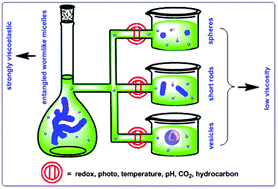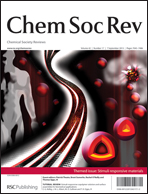A major scientific challenge of the past decade pertaining to the field of soft matter has been to craft ‘adaptable’ materials, inspired by nature, which can dynamically alter their structure and functionality on demand, in response to triggers produced by environmental changes. Amongst these, ‘smart’ surfactant wormlike micelles, responsive to external stimuli, are a particularly recent area of development, yet highly promising, given the versatility of the materials but simplicity of the design—relying on small amphiphilic molecules and their spontaneous self-assembly. The switching ‘on’ and ‘off’ of the micellar assembly structures has been reported using electrical, optical, thermal or pH triggers and is now envisaged for multiple stimuli. The structural changes, in turn, can induce major variations in the macroscopic characteristics, affecting properties such as viscosity and elasticity and sometimes even leading to a spontaneous and effective ‘sol–gel’ transition. These original smart materials based on wormlike micelles have been successfully used in the oil industry, and offer a significant potential in a wide range of other technological applications, including biomedicine, cleaning processes, drag reduction, template synthesis, to name but a few. This review will report results in this field published over the last few years, describe the potential and practical applications of stimuli-responsive wormlike micelles and point out future challenges.


 Please wait while we load your content...
Please wait while we load your content...